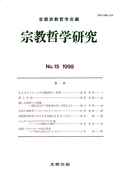C. J. Boström (1797 ― 1866. Prof. von praktischen Philosophie in Uppsala) gilt als der bedeutendste Philosoph Schwedens und anregender akademischer Lehrer, und einflußreicher Urheber der sogenannten Uppsala-Schule (des Boströmianismus).
Boströms Philosophie läßt sich am besten charakterisieren als Persönlichkeits -Idealismus, welchen Boström selbst doch rationelles oder absolutes Idealismus nennt. Nach ihm ist alle Wirklichkeit personaler Natur, und die Philosophie wird ihm daher die Wissenschaft von persönlichem Wesen. Den Ausgangspunkt seiner ganzen Spekulation bildet der Satz, daß alles Leben im Grunde Selbstbewußtsein ist, obwohl es in abgestuften Graden der Vollkommenheit auftritt. Allerdings nimmt er das Wort Selbstbewußtsein in einer sehr umfassenden Bedeutung. Er meint damit nicht etwa Ichbewußtsein, sondern das Substantielle in Allem, das aller Veränderlichkeit überhoben ist. Denn in unserer Erscheinungswelt äußert sich zwar das Leben immer als Selbsttätigkeit, dabei ist aber nach Boström das Wesentliche nicht die Veränderlichkeit. Alle Selbsttätigkeit setzt notwendig ein Selbstbewußtsein, das wiederum nur als in irgendeiner (fühlend) zu fassen möglich ist. Übrigens steht es für Boström von vornherein fest, daß zwei schwedische Wörter 〈vara〉 (esse) und förnimmelse (percipi) identische Begriffe sind. Es gibt daher in der Welt nichts und kann überhaupt nichts geben, was nicht selbst Bestimmung eines solchen ist.
Auf dieser Grundlage baut sich das metaphysische Lehrgebäude seines persönlichen Idealismus auf. Und eben daraus besteht auch die gründliche Aufgabe der Religionsphilosophie, die für Boström als “das höchste von der philosophischen Wissenschaften und der Schlußstein des rationellen Wissens” gilt; und ihre Aufgabe ist die ewige Wahrheit des folgenden Inhalts zu erkennen : ursprünglich und in des Wortes eigentlicher Bedeutung findet sich nichts anderes als die unendliche Vernunft und ihr Inhalts, d. h. nichts anderes als Gott und seine ewigen Bestimmungen—seine Ideen oder Begriffe, welche alle auch selbst absolut lebend oder selbstbewußt und mithin vollkommen vernehmende oder vernünftige Wesen sind. Da das Leben oder das Selbstbewußtsein die absolut erste Bestimmung ist alles dessen, was ist, so muß alle wahre ursprüngliche Wesenheit notwendig vollkommen lebend oder selbstbewußt sein. Aber alle absolut lebenden, selbstbewußten Wesen müssen von einem einzigen lebenden, selbstbewußten Wesen, der Gottheit umschlossen sein. In Bezug hierauf nennt Boström seine Philosophie einen rationellen oder absoluten Idealismus.
Und ich glaube, daß wir genau darin das Wesentlichste des Nordischen finden können.
抄録全体を表示
